Abstract
We have determined the amino acid sequence of the amino-terminal 67,000-dalton (67-kDa) fragment of human ceruloplasmin and have established overlapping sequences between the 67-kDa and 50-kDa fragments and between the 50-kDa and 19-kDa fragments. The 67-kDa fragment contains 480 amino acid residues and three glucosamine oligosaccharides. These results together with our previous sequence data for the 50-kDa and 19-kDa fragments complete the amino acid sequence of human ceruloplasmin. The polypeptide chain has a total of 1,046 amino acid residues (Mr 120,085) and has attachment sites for four glucosamine oligosaccharides; together these account for the total molecular mass of human ceruloplasmin (132 kDa). The sequence analysis of the peptides overlapping the fragments showed that one additional amino acid, arginine, is present between the 67-kDa and 50-kDa fragments, and another, lysine, is between the 50-kDa and 19-kDa fragments. Only two apparent sites of amino acid interchange have been identified in the polypeptide chain. Both involve a single-point interchange of glycine and lysine that would result in a difference in charge. The results of the complete sequence analysis verified that human ceruloplasmin is composed of a single polypeptide chain and that the subunit-like fragments are produced by proteolytic cleavage during purification (and possibly also in vivo).
Full text
PDF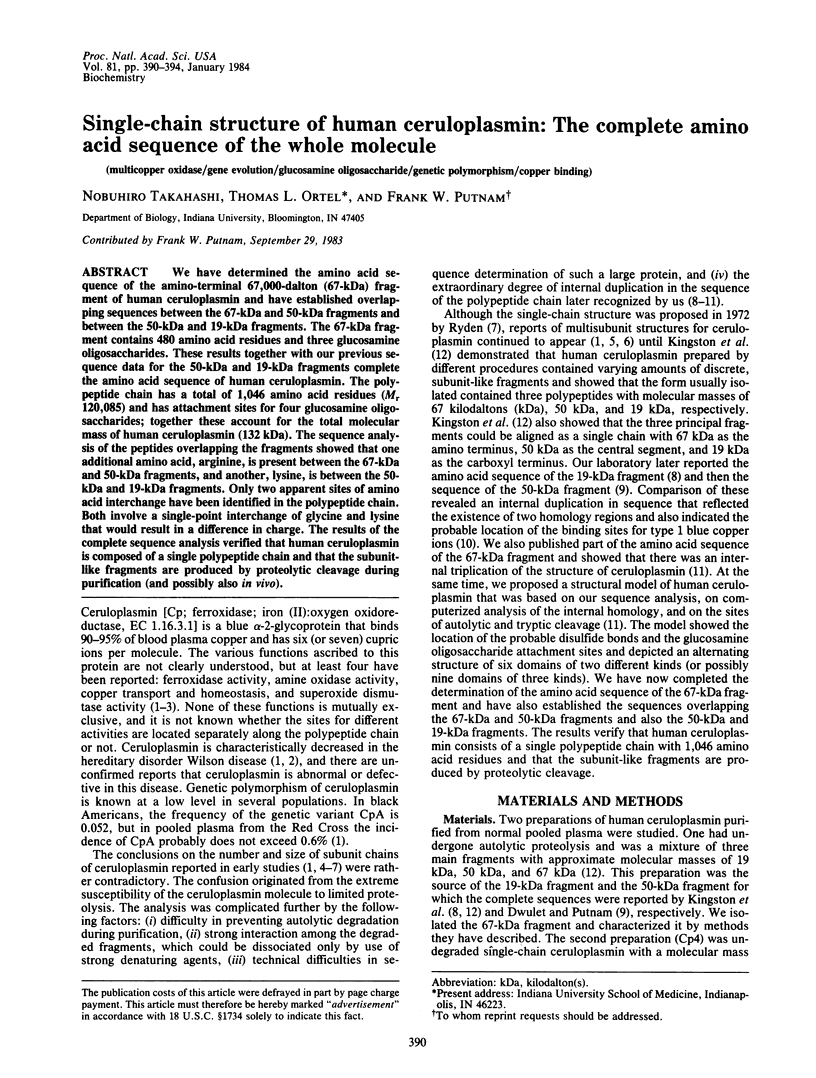
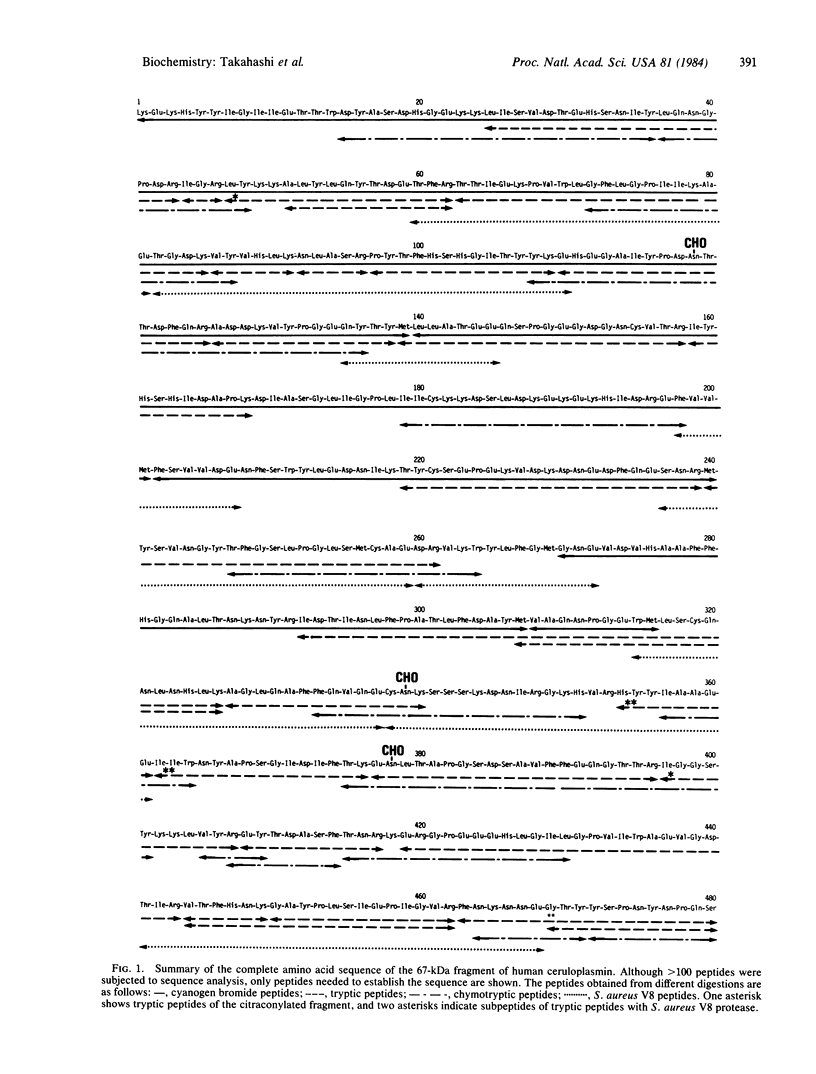
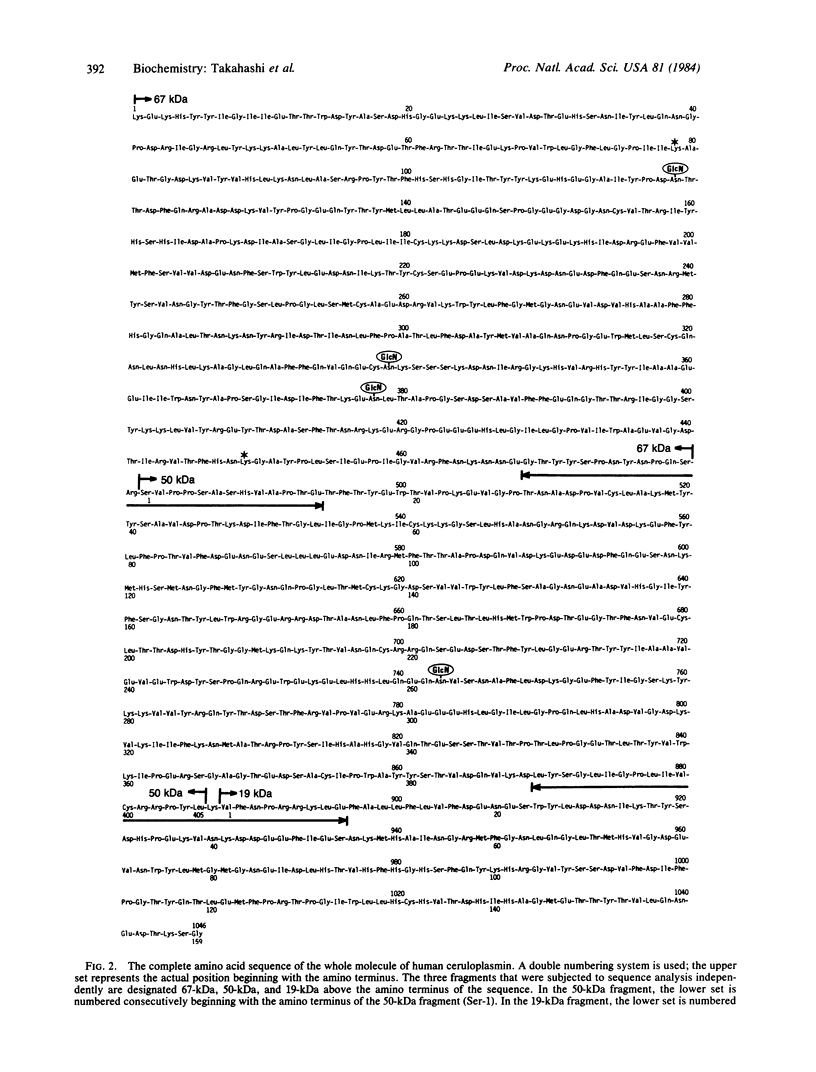
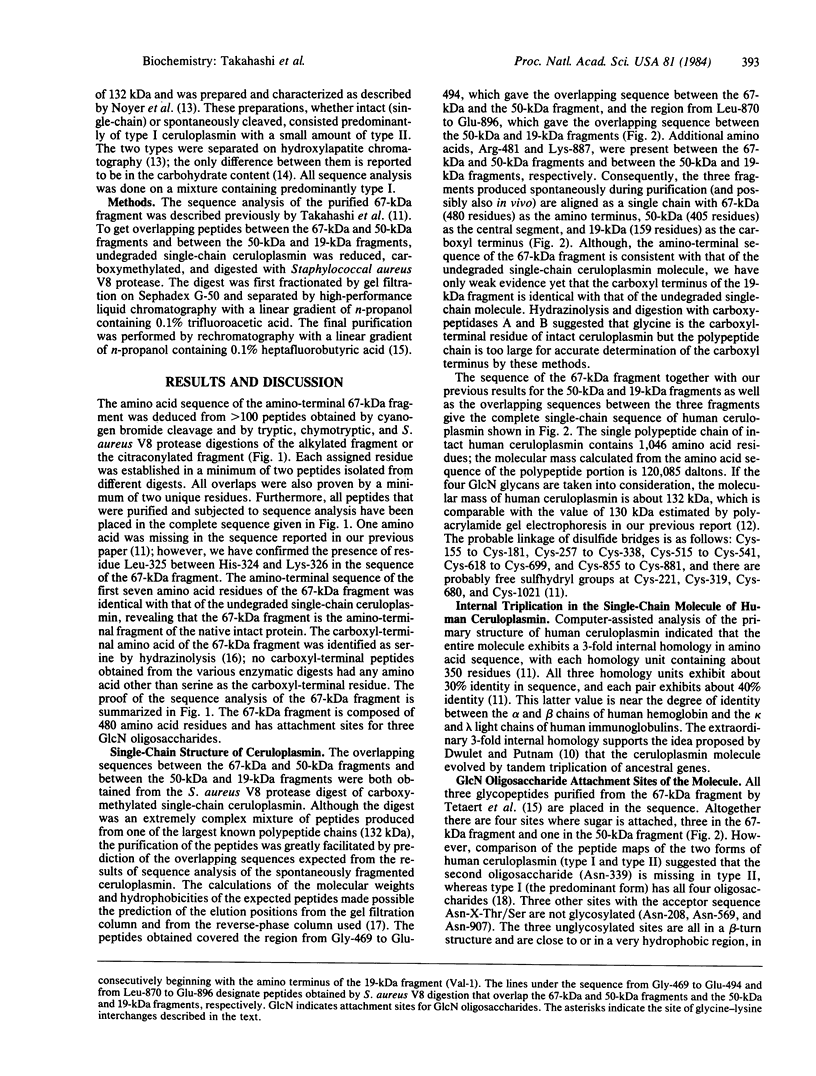
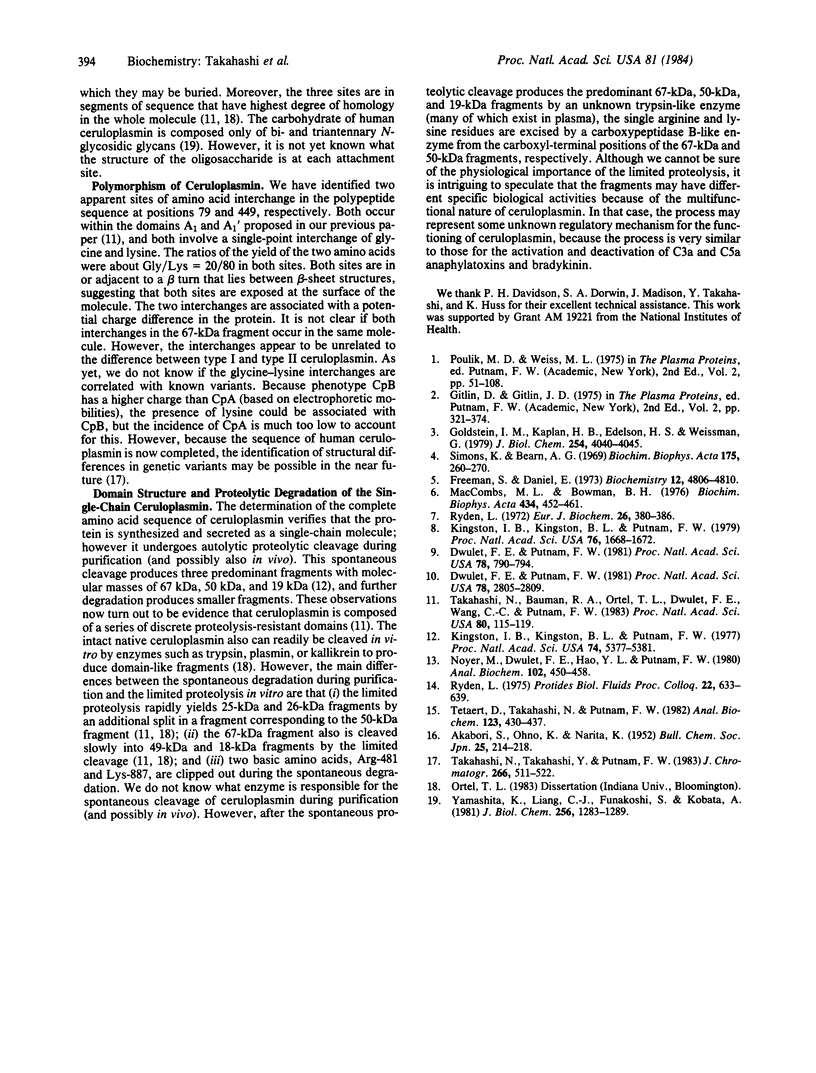
Selected References
These references are in PubMed. This may not be the complete list of references from this article.
- Dwulet F. E., Putnam F. W. Complete amino acid sequence of a 50,000-dalton fragment of human ceruloplasmin. Proc Natl Acad Sci U S A. 1981 Feb;78(2):790–794. doi: 10.1073/pnas.78.2.790. [DOI] [PMC free article] [PubMed] [Google Scholar]
- Dwulet F. E., Putnam F. W. Internal duplication and evolution of human ceruloplasmin. Proc Natl Acad Sci U S A. 1981 May;78(5):2805–2809. doi: 10.1073/pnas.78.5.2805. [DOI] [PMC free article] [PubMed] [Google Scholar]
- Freeman S., Daniel E. Dissociation and reconstitution of human ceruloplasmin. Biochemistry. 1973 Nov 6;12(23):4806–4810. doi: 10.1021/bi00747a038. [DOI] [PubMed] [Google Scholar]
- Goldstein I. M., Kaplan H. B., Edelson H. S., Weissmann G. Ceruloplasmin. A scavenger of superoxide anion radicals. J Biol Chem. 1979 May 25;254(10):4040–4045. [PubMed] [Google Scholar]
- Kingston I. B., Kingston B. L., Putnam F. W. Chemical evidence that proteolytic cleavage causes the heterogeneity present in human ceruloplasmin preparations. Proc Natl Acad Sci U S A. 1977 Dec;74(12):5377–5381. doi: 10.1073/pnas.74.12.5377. [DOI] [PMC free article] [PubMed] [Google Scholar]
- Kingston I. B., Kingston B. L., Putnam F. W. Complete amino acid sequence of a histidine-rich proteolytic fragment of human ceruloplasmin. Proc Natl Acad Sci U S A. 1979 Apr;76(4):1668–1672. doi: 10.1073/pnas.76.4.1668. [DOI] [PMC free article] [PubMed] [Google Scholar]
- McCombs M. L., Bowman B. H. Biochemical studies on human ceruloplasmin. Biochim Biophys Acta. 1976 Jun 15;434(2):452–461. doi: 10.1016/0005-2795(76)90235-x. [DOI] [PubMed] [Google Scholar]
- Noyer M., Dwulet F. E., Hao Y. L., Putnam F. W. Purification and characterization of undegraded human ceruloplasmin. Anal Biochem. 1980 Mar 1;102(2):450–458. doi: 10.1016/0003-2697(80)90181-5. [DOI] [PubMed] [Google Scholar]
- Rydén L. Single-chain structure of human ceruloplasmin. Eur J Biochem. 1972 Apr 11;26(3):380–386. doi: 10.1111/j.1432-1033.1972.tb01777.x. [DOI] [PubMed] [Google Scholar]
- Simons K., Bearn A. G. Isolation and partial characterization of the polypeptide chains in human ceruloplasmin. Biochim Biophys Acta. 1969 Mar;175(2):260–270. doi: 10.1016/0005-2795(69)90004-x. [DOI] [PubMed] [Google Scholar]
- Takahashi N., Bauman R. A., Ortel T. L., Dwulet F. E., Wang C. C., Putnam F. W. Internal triplication in the structure of human ceruloplasmin. Proc Natl Acad Sci U S A. 1983 Jan;80(1):115–119. doi: 10.1073/pnas.80.1.115. [DOI] [PMC free article] [PubMed] [Google Scholar]
- Takahashi N., Takahashi Y., Putnam F. W. Two-dimensional high-performance liquid chromatography and chemical modification in the strategy of sequence analysis. Complete amino acid sequence of the lambda light chain of human immunoglobulin D. J Chromatogr. 1983 Aug 26;266:511–522. doi: 10.1016/s0021-9673(01)90922-7. [DOI] [PubMed] [Google Scholar]
- Tetaert D., Takahashi N., Putman F. W. Purification of glycopeptides of human ceruloplasmin and immunoglobulin D by high-pressure liquid chromatography. Anal Biochem. 1982 Jul 1;123(2):430–437. doi: 10.1016/0003-2697(82)90468-7. [DOI] [PubMed] [Google Scholar]
- Yamashita K., Liang C. J., Funakoshi S., Kobata A. Structural studies of asparagine-linked sugar chains of human ceruloplasmin. Structural characteristics of the triantennary complex type sugar chains of human plasma glycoproteins. J Biol Chem. 1981 Feb 10;256(3):1283–1289. [PubMed] [Google Scholar]


